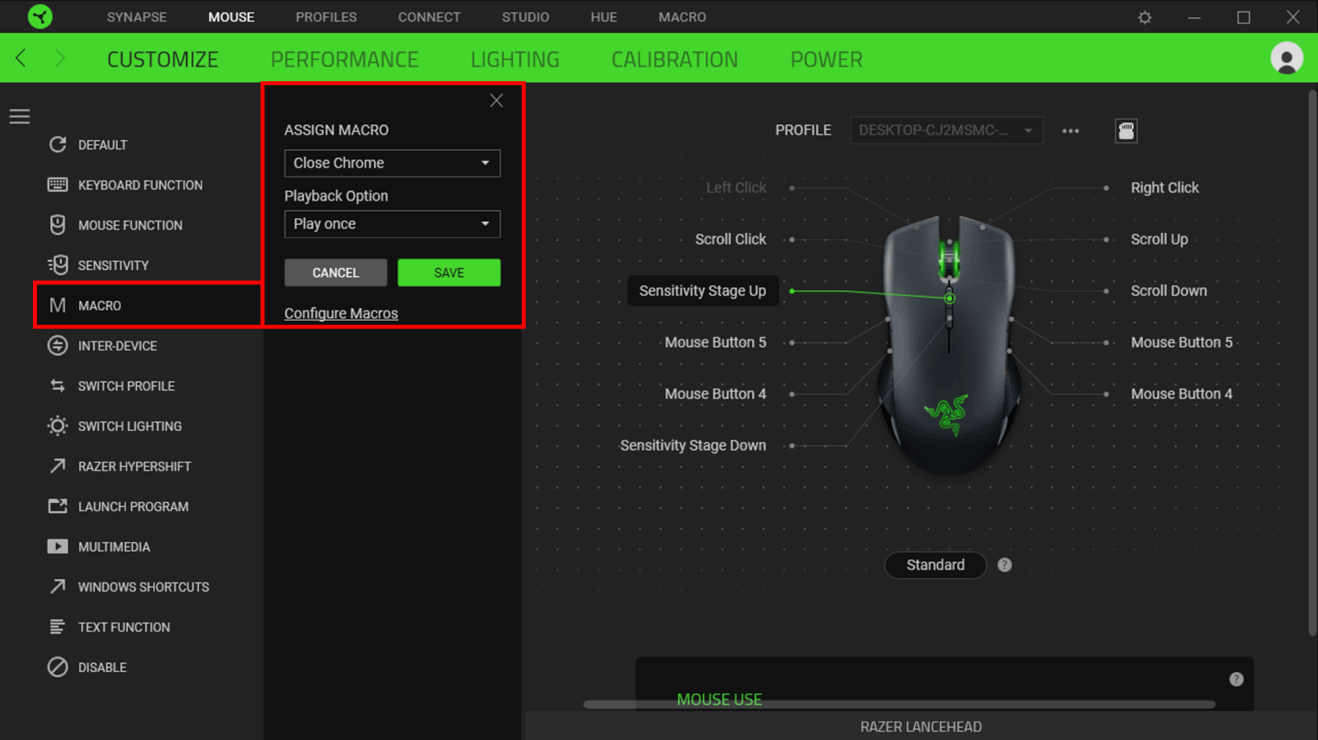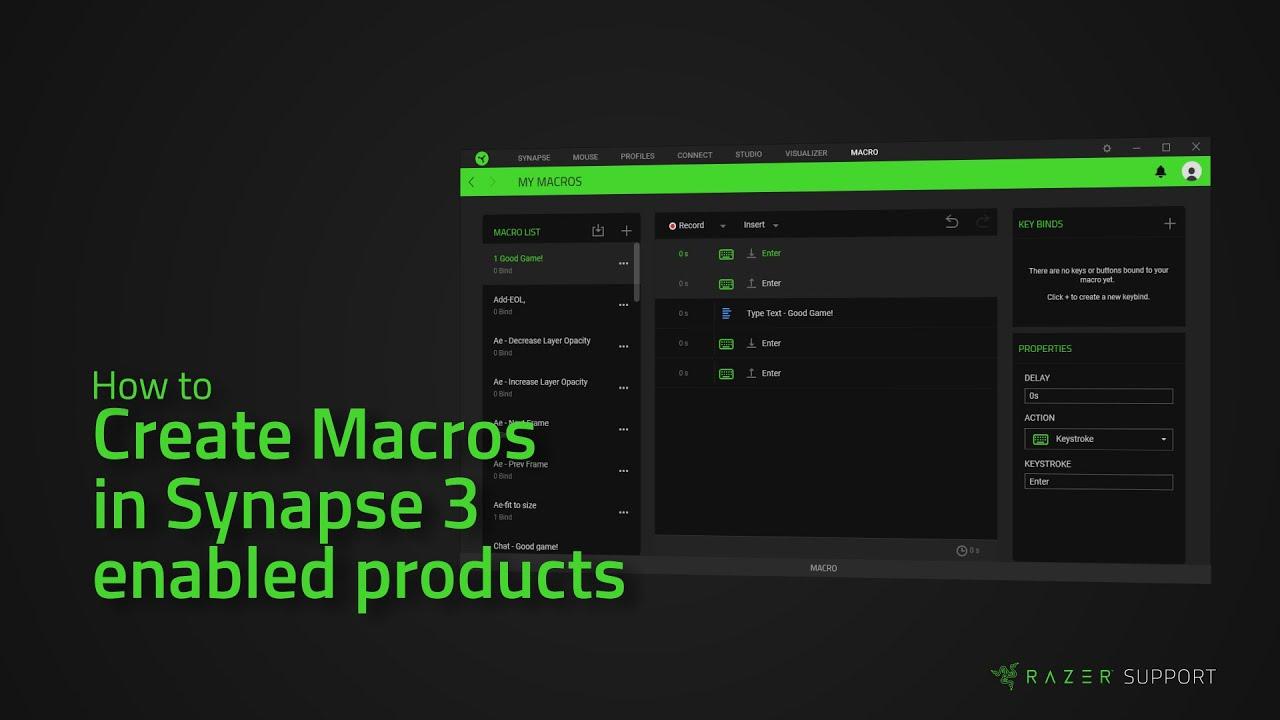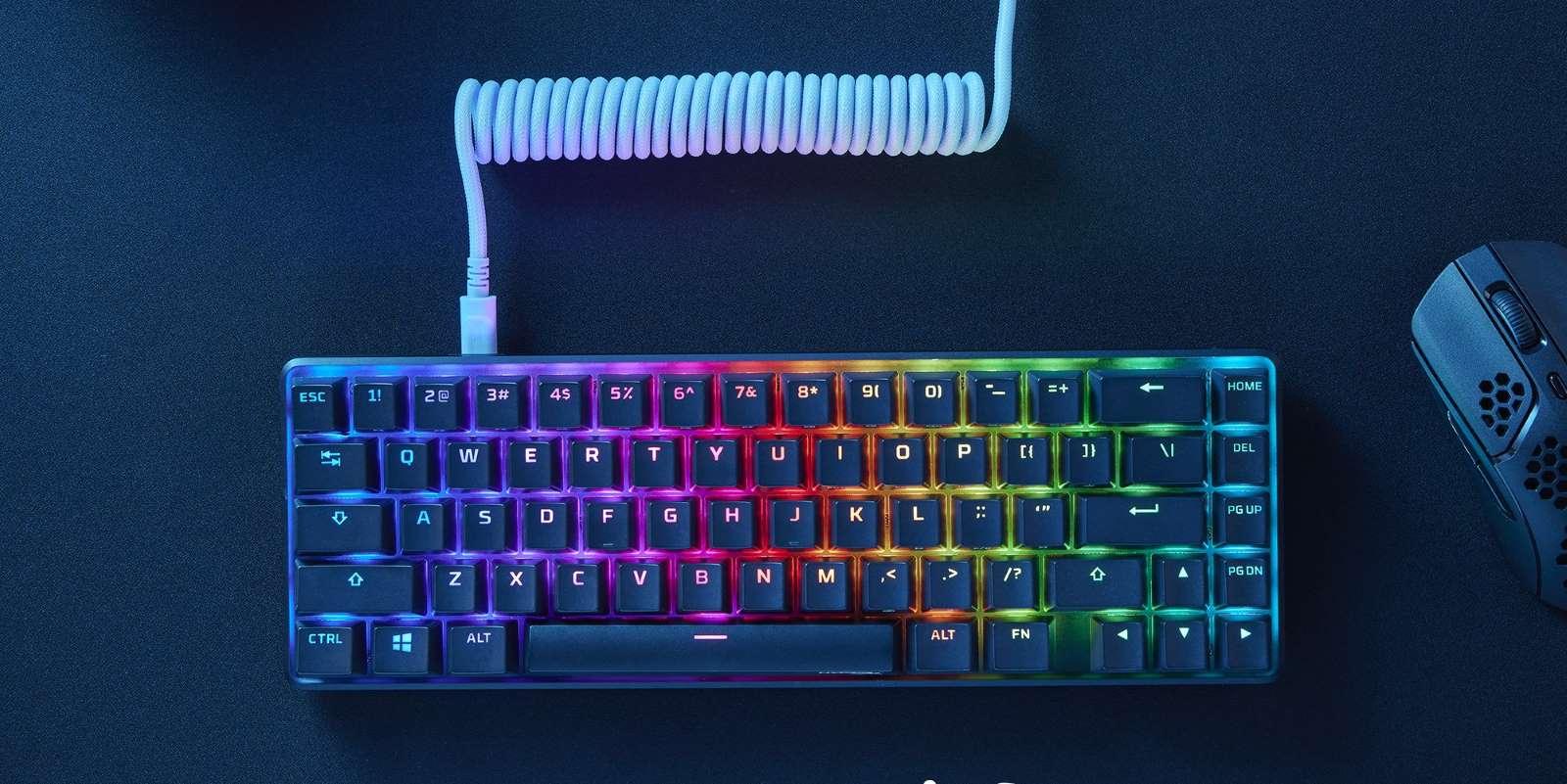- Synapse centralizes the creation, editing, and assignment of macros on keyboards and mice Razer.
- The Macro Module allows you to record, import/export (XML) and adjust delays and movements.
- Profiles and Hypershift help separate usage and avoid conflicts when typing or chatting.
- Some actions require Synapse to be active; built-in memory makes it easy to take your macros with you.

If you have a peripheral from the brand of the three-headed snake, you'll probably want to take advantage of its possibilities with macros. They're not just for games: they can also be used to speed up everyday tasks, and with a little care, you can set up shortcuts that will save you time and clicks in any app.
In this guide we gather, step by step, everything you need to create, assign, save, and import macros with Razer Synapse (on both Razer keyboards and mice). You'll see the differences between Synapse 2.0 and Synapse 3, how to use the Macro Module, what playback options exist, and how to take advantage of profiles and Hypershift to keep everything under control.
What are macros and why you might care about them?
A macro is a sequence of actions (keystrokes, clicks, mouse movements or commands) that runs with a single key or button, ideal for automate repetitive routinesIn games, you can launch quick combinations, and in productivity, you can speed up functions like copying, pasting, opening programs, or typing predefined text.
This versatility goes beyond gaming: with macros you can create shortcuts for editing photo/video, manage office workflows or trigger scripts, as long as you assign each action well and define its timing.

Razer Software: Synapse 2.0 (Legacy) and Synapse 3
Razer Synapse is the command center where you configure your peripherals. The version Razer Synapse 2.0 (legacy) allows you to reassign controls, create macros, and automatically save settings to the cloud. Synapse 3, which many users already run, maintains a very similar menu distribution and adds more modern modules and features.
When you open Synapse, you will see all detected devices and the accessories installed (e.g. Chroma Studio, Macro Module or Visualizer). When you enter your keyboard or mouse an interactive scheme appears: when you hover over each key/button it lights up, indicating that you can edit your assignment.
Getting Started: Modules, Dashboards, and Key Elements
To work with macros in Synapse 2.0/3, the most important thing is the Macro ModuleIf this is your first time using it, the software itself will prompt you to download it: it's lightweight and integrates into the main panel. From there, you can create, import, and export your macros.
Within the device (keyboard or mouse), the tab Personalization. displays each key/button and its current action. Selecting one opens the list of available functions, including "Macro." You'll also find actions like Run program, system shortcuts or typing text.
How to Create Macros with Razer Software
The most convenient and visual way to work is from the Macro Module. We recommend this option because it allows you to view, edit, and debug each event with precision. The typical flow is simple: create macro, record, adjust, and assign.
Detailed steps to create your first macro with Synapse:
– Go to your device and choose a key/button to assign. Then select “Macro» as a function.
– If you don’t have any macros created, click “Configure Macros” to open the Macro Module (download it if it isn’t already).
– In the macros panel, click on «+» to add a new one. Give it a clear name (for example, “Copy” or “Paste”).
– Press «Record». After the 3-second countdown, execute the key sequence.
– Stop recording and review the recorded events, including delays between keystrokes.
While recording you can activate options such as Mouse movement tracking (if you need to capture movement) or adjust the Recording Delay. This helps you fine-tune the timing and achieve a perfect performance. challenge in each repetition.
In addition to the "Keystroke" record, the Action panel lets you convert the macro to "Mouse button", "Write text" or "Run command"It is a magnificent way to open apps, launch tools or insert common snippets without typing them each time.
Once you have your macros ready, go back to the Customization tab, select the key or button, and assign the macro from the list. Choose the "Playback option»: Run once per click, hold while pressed, loop, or toggle. Adjusting this mode will make a difference in how you interact with your device.
On-the-fly macros: recording without software
Some Razer keyboards allow you to record macros. On the Fly without having Synapse open. This is the most basic and useful way to do it for simple models, although later editing is more limited. It is usually documented in the manual of the product (in the box or on the Razer support portal), with the exact combination to start/stop recording.
This mode is handy if you are away from the software and need a quick shortcut, but for intensive and refined use the Macro Module offers more control and visibility of each event.
Advanced Mapping: Hypershift, Profiles, and Actions
Razer includes an alternative mode called HypershiftImagine a "secondary layer" of assignments that activates while you hold a key or button. This way, you can duplicate functions: in standard mode, you have common actions, and with Hypershift, a complete set of additional macros.
You can also organize multiple configurations by profilesMany devices support one or more profiles on the built-in memory; others are managed from the PC. Switching between profiles based on the game or application is an effective way to keep your files organized. specific macros.
In the list of actions you will see very useful options such as "Run program» or shortcuts of Windows. Although they are not macros in the strict sense, they turn the mouse/keyboard into a productive launcher: opening the editor, a specific path or a script With a touch.
Keep in mind that some functions require that Razer Synapse is activeThe software itself indicates this with a label when the action cannot be executed solely from the device's local memory.
How to disable/enable your macros with one key
Synapse 3 does not offer a "master switch» single key to disable all macros. However, there are several effective strategies to achieve a similar result, preventing the keyboard from "going crazy" while chatting or typing in a game:
– Create two profiles: one “Clean” (no macros) and one “Macros”. Assign a key to “Change profile». This way you can switch between complete environments on the fly.
– Use Hypershift as “macro mode”: place your sequences only on the Hypershift layer and assign its key/button. As long as you don’t hold it, the keyboard will behave like this. normal.
– Adjust the playback mode: For conflicting macros, choose “Run while pressed” instead of “toggle” to minimize accidental activations while typing.
If you work with multiple games/programs, you can also link profiles to apps so that they are activated automatically when you open them, and return to the clean profile outside of them. This is another way to "turn macros off/on" without entering Synapse.
Save and Sync: Local Storage, PC, and Cloud
Razer offers several save locations: local memory of the device (when supported by the model), storage local on your computer or in the cloud (in Synapse 2.0/3). Onboard storage is our favorite option when available, because you can take your macros with you, even to another PC without set up.
However, not all actions can be executed from the peripheral's memory. Some complex functions require Synapse is runningThe program will notify you if a specific action requires the software to be active.
Importing and exporting macros: the role of XML
The Macro Module allows you to import and export your configurations. Razer does not use JSON or Lua for these imports, but rather a XML format with a specific structure. When you import a valid XML file, the macro becomes available in your list for assignment and editing from the Synapse interface.
That XML can contain sequences of keystrokes, mouse events, and movements (including relative X/Y coordinates). Some people use this ability to counter recoil patterns in shooters, creating stepped mouse movements with adjusted delays.
Although it is technically possible, it should be stressed that the effectiveness depends on the game sensitivity (not of the DPI) and that these settings are specific to each title/weapon. Additionally, using macros in competitive play may conflict with their rules; proceed with responsibility and always check the game's terms of service.
Practical tips when importing and adjusting macros with movements:
– Review the sequence in the Macro Module: press/release button, blocks of movement and delays.
– Adjust “Add Delay” after each section to refine cadence.
– Assign playback to “While Press” to maintain manual control.
– If you notice that after a long time they stop responding accurately, it may be due to memory/process management: a reboot of the team usually returns stability.
Useful examples: copy/paste, text and commands
A classic way to start is to create macros of Copy (Ctrl+C) and Take (Ctrl+V). With basic recording, you capture both combinations and assign them to convenient keys. The same applies to "Cut," "Save As," or common shortcuts in your favorite editor.
Another very powerful option is "write text», ideal for standard emails, templates, or frequently asked questions. If you combine it with profiles, you can have a different set of texts for work, study, or streaming.
For his part, «Run command» allows you to open apps, specific paths, or scripts. It's an efficient way to turn a mouse button into a launcher and keep tools you use at hand. diario.
Macros also on the mouse: buttons, layers and options
On Razer mice the process is practically identical: you open the device, choose the button, assign "Macro» and decide the playback mode. The side menu shows all available buttons and what they do by default, so you can relocate actions without losing essential functions.
Remember that you can switch between modes Standard and Hypershift, thus multiplying the number of accesses. For productivity tasks, placing macros on the thumb or wheel can be especially comfortable.
Surface calibration: precision that shows
Although not a macro function, the surface calibration Razer's Motion Sensor helps the mouse sensor better recognize the color, topography, and properties of your mouse pad. By comparing your movement to the calibrated pattern in real time, the sensor reacts more quickly and accurately.
If you are going to record macros with fine movements (e.g. short movements and constants), good calibration can provide consistency and improve the final result in delicate tasks.
Tips to avoid conflicts with chat and typing
When you use your PC for chatting or working, game macros may interfere with your deed. To avoid it:
– Keep a “Clean” profile with no macros and other “Gaming” settings.
– Place macros only in Hypershift so they won’t act unless you maintain them.
– Check that sensitive macros are not in mode toggle if you tend to activate them by mistake.
These three Tricks They usually solve 90% of accidental activation problems. And if something goes off, check the record of the macro (events and delays) usually reveals the cause.
Troubleshooting and maintenance
If you notice that after 45–90 minutes some macros become less reliable, it may be a matter of processes, and system memory. Closing and reopening Synapse helps; a restart usually leaves it perfectly fine.
Export your macros to XML as a regular backup. This way you can go back or move between computers without losing your data. profilesAnd when you try new things, duplicate the macro and experiment with the copy.
Creating and adjusting macros is more fun than it seems: from combinations for games to complex productivity actions, the limit is set by you. imaginationBy choosing the right profiles, Hypershift, and playback modes, you'll have complete control without sacrificing comfort in your everyday life.
Passionate writer about the world of bytes and technology in general. I love sharing my knowledge through writing, and that's what I'll do on this blog, show you all the most interesting things about gadgets, software, hardware, tech trends, and more. My goal is to help you navigate the digital world in a simple and entertaining way.
